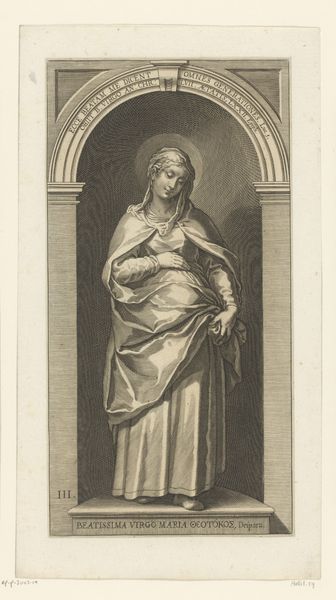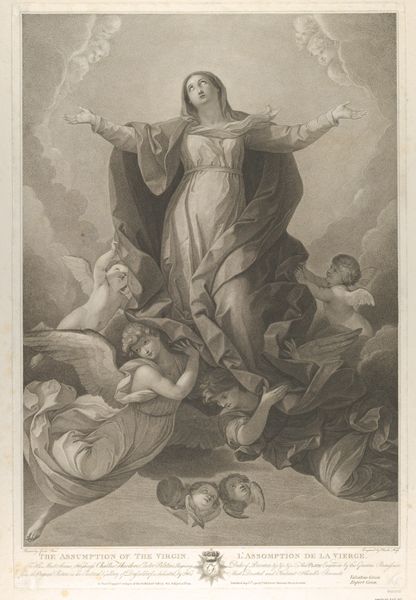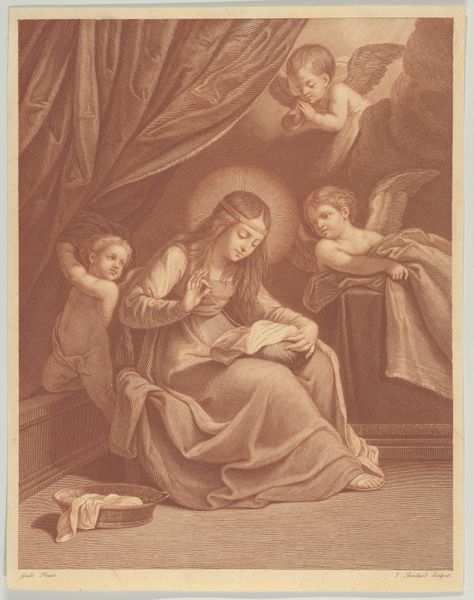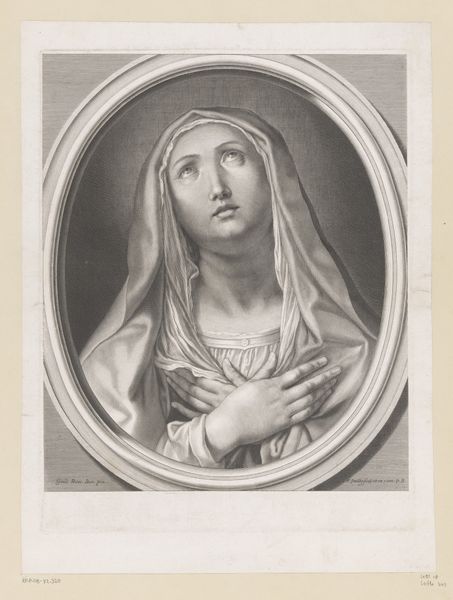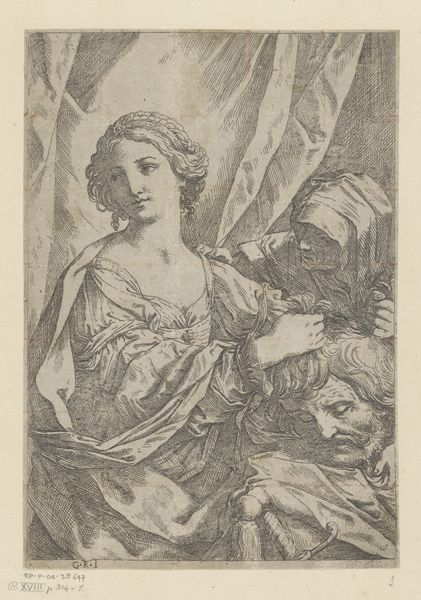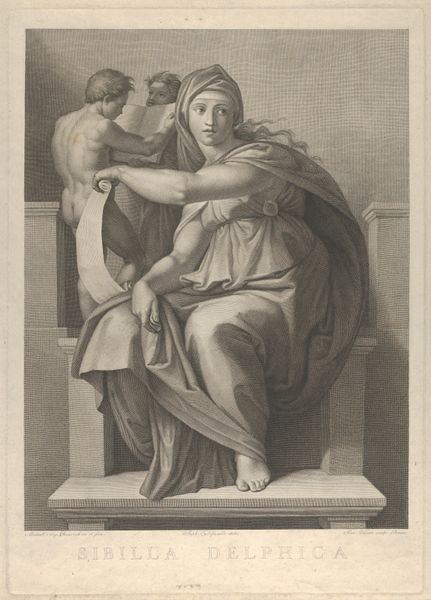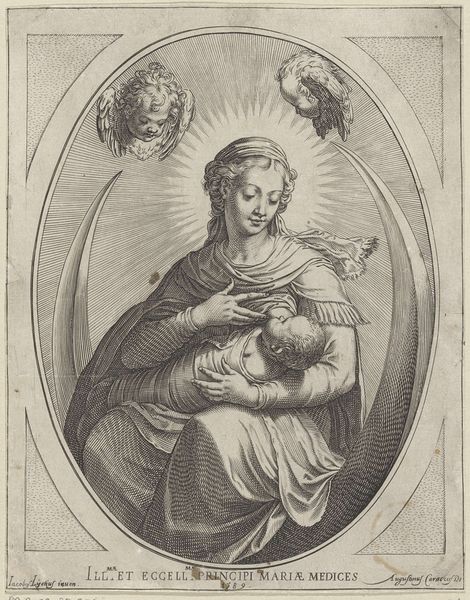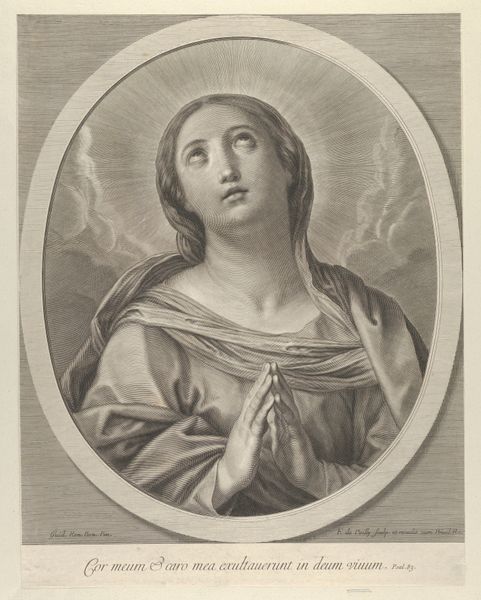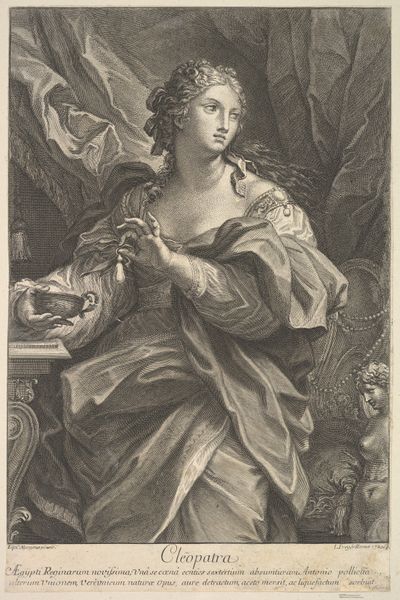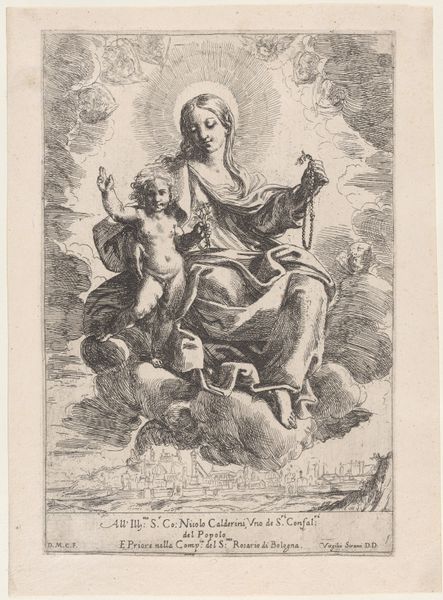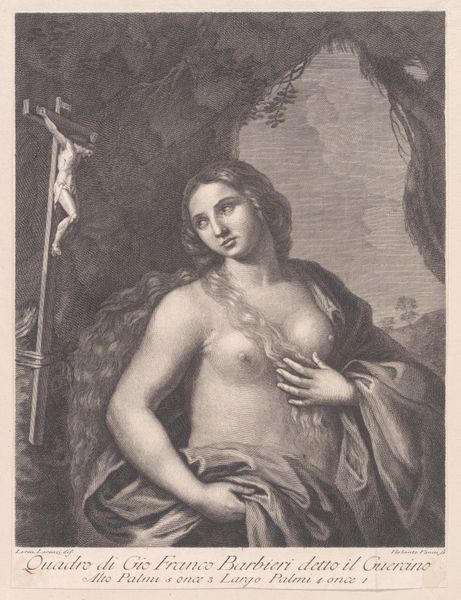
Dimensions: Plate: 15 15/16 × 11 7/16 in. (40.5 × 29 cm) Sheet: 20 1/16 × 15 3/16 in. (51 × 38.6 cm)
Copyright: Public Domain
Curator: This print, titled "Te Deum Laudamus," was created between 1765 and 1769 by Robert Strange. It's an engraving after a painting by Carlo Maratta. What are your first thoughts when you see it? Editor: Honestly? A bit theatrical, in a baroque kind of way. It feels like a very posed, carefully constructed moment, all about the Virgin and these adoring angels. Is she... singing? Curator: The "Te Deum" is a hymn, a song of praise, so it fits thematically. Robert Strange was quite skilled at translating the grand historical narratives favored in academic art into print. This piece exemplifies the era's artistic values; a moment of reverence, elevated by Mary's presence. There is an undeniable aesthetic that upholds religious themes during this period. Editor: It’s interesting how the engraving transforms the texture. The angel with the harp looks rather stiff, and almost a little sad if I am honest. But it has an old-world charm. I mean, you can almost hear the echo of those high, soprano voices and smell the incense, and perhaps there's also that faint, musty scent of antique paper... like a treasured, albeit slightly neglected, hymn book. Curator: Certainly. And the very act of making this available through print had its own set of meanings. This makes previously inaccessible paintings accessible to a wider audience; this speaks volumes of its significance as a cultural artifact. Did this accessibility translate to greater public understanding and, if so, what kind of social impact might it have had? Editor: I suppose it could give individuals agency through owning images like these in the comfort of their homes, almost like owning religious icons, but at a much lower cost. Also, I really dig that he turned painting to print in a unique manner that brings this piece to life. What is your greatest take away about this print? Curator: It reminds us of the complex ways art functioned in the 18th century, straddling devotional and decorative spheres while shaping our understanding of historical narratives. Editor: Agreed. It's a powerful echo from the past, resonating in the silence of the museum with that baroque flamboyance still somewhat audible centuries later.
Comments
No comments
Be the first to comment and join the conversation on the ultimate creative platform.
